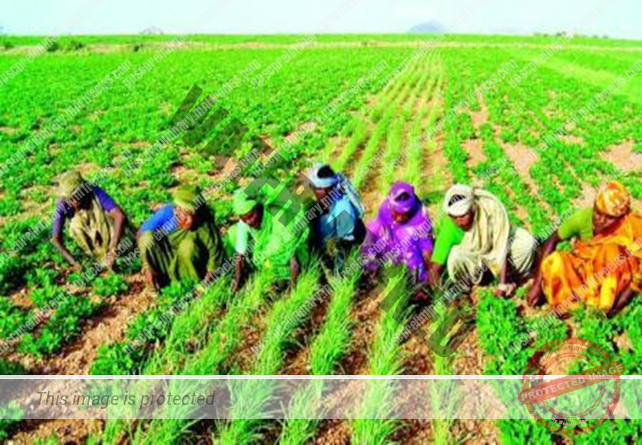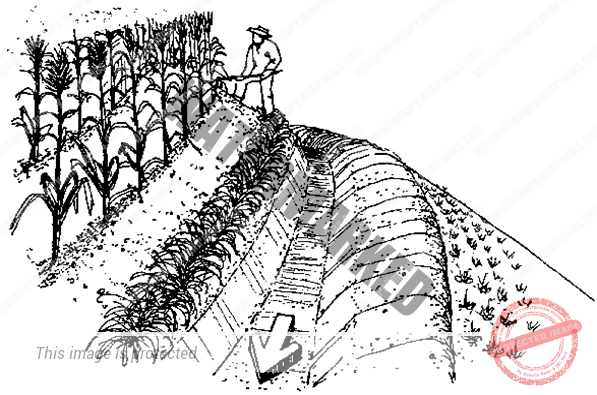- OTHER MAJOR CAUSES OF SOIL EROSION
- DEFORESTATION
- FAULTY METHODS OF AGRICULTURE
- SOIL SALINITY AND SOIL ALKANITY
- METHODS OF SOIL CONSERVATION
UNIT 5 – SOIL – PART 11
OTHER MAJOR CAUSES OF SOIL EROSION:
DEFORESTATION:
- The population explosion has created pressure on forest land and resources, and this causes deforestation.
- Deforestation accentuates soil erosion (soil degradation).
- Roots of trees and plants bind the soil particles and regulate the flow of water, thus saving soil from erosion. Deforestation makes soil vulnerable to wind and water erosion.
OVERGRAZING:
- The grass is grazed to the ground and torn out by the roots by animals.
- This leads to lose structure of the soil and the soil is easily washed away by rains.
- Moreover, the soil is pulverised (reduce to fine particles) by the hoofs of animals and thus proves detrimental to topsoil when heavy showers fall on it.
- Soil erosion due to overgrazing is a common site in the hilly areas
FAULTY METHODS OF AGRICULTURE:
- Wrong ploughing, lack of crop rotation and practice of shifting cultivation are the most adversely affecting methods of agriculture.
- If the fields are ploughed along the slope, there is no obstruction to the flow of water and the water washes away the topsoil easily.
- In some parts of the country, the same crop is grown year after year which spoils the chemical balance of the soil. This soil is exhausted and is easily eroded by wind or water.
- The removal of the forest cover shifting cultivation leads to the exposure of the soil to rains and sun which results in heavy loss of topsoil, especially on the hill slopes.
SOIL SALINITY AND SOIL ALKANITY:
A fairly large area of arable land in the irrigated zones of India is becoming saline because of over irrigation. The salt lodged in the lower profiles of the soil comes up to the surface and destroys its fertility. Chemical fertilisers in the absence of organic manures are also harmful to the soil. Unless the soil gets enough humus, chemicals harden it and reduce its fertility in the long run.
SOIL CONSERVATION:
Soil conservation is a methodology to maintain soil fertility, prevent soil erosion and exhaustion, and improve the degraded condition of the soil.
METHODS OF SOIL CONSERVATION:
CROP ROTATION:
- Crop rotation is a practice in which a different crop is cultivated on a piece of land each year.
- This helps to conserve soil fertility as different crops require different nutrients from the soil. Crop rotation will provide enough time to restore lost nutrients.
- For Example, Potatoes Require Much Potash, but wheat requires nitrate. Thus, it is best to alternate crops in the field.
- Legumes such as Peas, Beans, and many other plants, add nitrates to the soil by converting free nitrogen in the air into nitrogenous nodules on their roots.
- Thus, if they are included in the crop rotation nitrogenous fertilisers can be dispensed with.
STRIP CROPPING
- Crops may be cultivated in alternate strips, parallel to one another. Some strips may be allowed to lie fallow while in other different crops may be sown.
- Various crops are harvested at different intervals. This ensures that at no time of the year the entire area is left bare or exposed.
- The tall growing crops act as windbreaks and the strips which are often parallel to the contours help in increasing water absorption by the soil by slowing down runoff.
CHECKING SHIFTING CULTIVATION:
- Checking and reducing shifting cultivation by persuading the tribal people to switch over to settled agriculture is a very effective method of soil conservation.
- This can be done by planning for their resettlement which involves the provision of residential accommodation, agricultural implements, seeds, manures, cattle, and reclaimed land.
MULCHING:
The bare ground (topsoil) between plants is covered with a protective layer of organic matter like grass clippings, straw, etc.
CONTOUR BARRIERS:
- Stones, Grass, Soil are used to build barriers along contours. Trenches are made in front of the barriers to collect water.
- They intercept downslope flowing water and soil particles. These barriers slow down the water movement and reduce its erosive force. They also filter out and trap many of the suspended soil particles, keeping them from being washed out of the field.
- A long-term advantage of barriers is that soil tends to build up behind them, creating a terrace effect. Barriers can be classified as live (strips of living plants), dead (rocks, crop residues), or mixed (a combination of the previous two).


